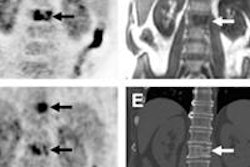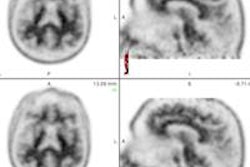French researchers are using PET images to try to determine why some people remember their dreams and others do not.
Study results published online January 16 in Neuropsychopharmacology indicate that the brain's temporoparietal junction, an information-processing hub, is more active in people who most often remember their dreams.
Perrine Ruby, PhD, a research fellow at the Lyon Neuroscience Research Center, and colleagues used PET to measure spontaneous brain activity in 41 volunteers while the participants were awake and while they were asleep. The volunteers were divided into two groups: 21 high dream recallers who recalled dreams 5.2 mornings per week, on average, and 20 low dream recallers who reported two dreams per month, on average.
High dream recallers, both while awake and while asleep, showed stronger spontaneous brain activity in the medial prefrontal cortex and in the temporoparietal junction.




















